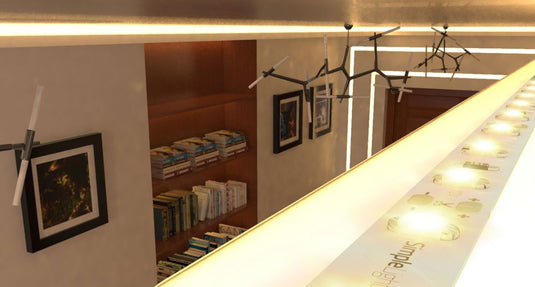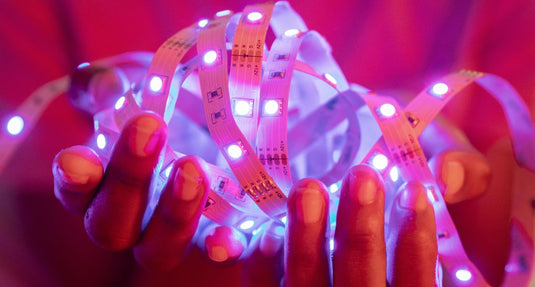Lighting fixtures have different brightness levels to accommodate every lighting requirement. If you're illuminating an indoor space, you won't need the exceptional luminance an outdoor fitting brings. Alternatively, an indoor light bulb might not provide sufficient illumination in an outdoor setting. So, before buying a lighting fixture, determine your requirements to get the one you truly need!
When thinking about lighting, lumens and watts are often associated with brightness. Many people tend to confuse the two, which sometimes leads to errors. So, before anything else, remember lumens and watts are different. For a better understanding, here's a closer look at the two terminologies!

Lumens vs. Watts: The Basics
Many think that lumens and watts both pertain to light output. However, only lumens measure the light output of a lighting fixture. Watts is the unit of measurement for power consumption, not brightness. So, why do you think many are confused between the two?
Before, traditional lighting fixtures equated brightness with watts. The more power the fitting consumes, the more luminance it can produce. The only problem with this is it’s very inefficient.
When LED lighting came out, many were confused and thought it would not provide sufficient illumination since it runs at a relatively low wattage. However, that’s not the case! LEDs can efficiently transform most of the energy they consume into light; therefore, it does not need much to produce outstanding brilliance.
If watts is still used as a unit of measurement for light, it won't be accurate since LED lights are more energy-efficient. So, don't confuse wattage (power consumption) and lumens (light output) anymore.
The Transition to LED Lighting
When LED technology hit the lighting industry, it revolutionised the unit of measurement for brightness, shifting from wattage to lumens, which is proven to be more accurate. Why do you think LED lighting is energy-efficient?
As mentioned above, LEDs use the energy they consume to solely create light. Now, you might be asking how it is for others? With the less efficient traditional fittings, aside from light, they transform the energy they use into heat. It's the reason why halogen or incandescent bulbs heat up when they're switched on.
Since LED lighting is energy efficient, you cannot trust watts to measure its brightness. It will not be accurate, and it can mislead consumers.
Understanding Lumens
Lumens gauge the total amount of visible light (to a human eye) from a light source or lamp. The higher the lumens count, the brighter the fitting will appear. To illuminate a space properly, you must identify its lumens requirement. How? It depends on the space's purpose and the activities you'll be doing.
You may think a single light bulb is enough for every room. Nope, that will not do. Each space has a specific function, and to get the most out of it, you must guarantee that the surroundings are perfectly designed. Lighting is an integral part of creating a functional and comfortable environment.
To give you a general idea, here’s the average lux (lumens per square foot) requirement according to the room’s purposes:
- Living room: 700 – 1000 lux
- Bedroom: 400 – 600 lux
- Dining room: 500 – 700 lux
- Bathroom: 1000 – 1500 lux
- Kitchen (task): 1500 lux
- Kitchen (general): 1000 – 1500 lux
- Hallway: 100 – 300 lux
So, is knowing the lux requirement per room enough to determine the brightness you'll need? It's only one part. You also need to know the total square metre of your space before you can compute the target brightness level. When you get those, all you have to do is multiply the square metre by the lux requirement, and you'll get the target lumens for the space.
Beyond Brightness: Colour Temperature
Colour temperature is an attribute of visible light that impacts a room's ambience and functionality. It's measured by Kelvin and ranges from warm white light (3000K) to cool white light (6000K). Typically, cool white and natural white are seen as brighter colour temperatures and are used as task lighting. On the other hand, warm white light is perceived as less intense, so it is mainly used as ambient lighting.
Similar to lumens, depending on the space's purpose, the colour temperate you'll use varies. Cool white and natural white are perfect for the bathroom and the kitchen because they make the space functional, safe and efficient. Alternatively, warm white is better in the living room and bedroom as it creates a cosy environment.
Lumens and Watts in LED Bulb Labels
When purchasing LED light bulbs, it's essential to check the packaging. There, you'll find all the necessary information to get your desired fitting. Always check the lumens and watts, as well as the colour temperature of the lights! It's important because these are the things you’ll need to assess the overall outcome of the room and the cost to run it.
Conclusion
Always remember that for LED lighting solutions, lumens determine brightness, while watts indicate power consumption. Watts is not equal to lumens, and they quantify different elements. Also, colour temperature can affect the perception of brightness, so choose the most appropriate for the activities you'll do in your space!
If you don’t know where to get top-quality LED lighting, visit our website, LED Supplier. We have an extensive selection of commercial, indoor, and outdoor lighting!




